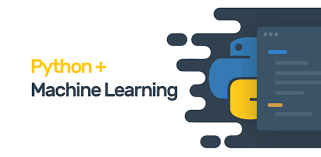k-means clustering | Python Unsupervised Learning -1
In this series of articles, I will explain the topic of Unsupervised Learning and make examples of it.
Unsupervised learning is a class of machine learning techniques for discovering patterns in data.
For instance, finding the natural “clusters” of customers based on their purchase histories, or searching for patterns and correlations among the purchases and using these patterns to express the data in compressed form.
- Unsupervised learning finds patterns in data
- E.g., clustering customers by their purchases
- Compressing the data using purchases patterns (dimension reduction)
Supervised vs Unsupervised learning
- Supervised learning finds patterns for a prediction task
- E.g., classify tumors as benign or cancerous (labels)
- Unsupervised learning finds patterns in data
- … but without a specific prediction task in mind
k-means clustering | Python Unsupervised Learning -1
In this part we’ll cluster some sample data using k-means clustering.
- Finds clusters of samples
- Numbers of clusters must be specified
- Implemented in sklearn (scikit-learn)
Let’s do a simple example, generate sample data and 2D points
We have to import the Iris dataset and other necessary libraries.
import matplotlib.pyplot as plt from sklearn import datasets from sklearn.cluster import KMeans import pandas as pd import numpy as np from sklearn.datasets.samples_generator import make_blobs
Generate sample data
np.random.seed(0) batch_size = 45 centers = [[1, 1], [-1, -1], [1, -1]] n_clusters = len(centers) X, labels_true = make_blobs(n_samples=3000, centers=centers, cluster_std=0.7)
Compute clustering with Means
k_means = KMeans(n_clusters=3) k_means.fit(X) k_means_labels = k_means.labels_ k_means_cluster_centers = k_means.cluster_centers_ k_means_labels_unique = np.unique(k_means_labels)
Plot result
colors = ['#4EACC5', '#FF9C34', '#4E9A06']
plt.figure()
for k, col in zip(range(n_clusters), colors):
my_members = k_means_labels == k
cluster_center = k_means_cluster_centers[k]
plt.plot(X[my_members, 0], X[my_members, 1], 'w',
markerfacecolor=col, marker='.')
plt.plot(cluster_center[0], cluster_center[1], 'o', markerfacecolor=col,
markeredgecolor='k', markersize=6)
plt.title('KMeans')
plt.grid(True)
plt.show()
As a result, you will see a printout like in the picture.
Now that we have briefly got to know the k-means algorithm and explained the topic of Unsupervised learning, see you in the next article.
Thank you.

